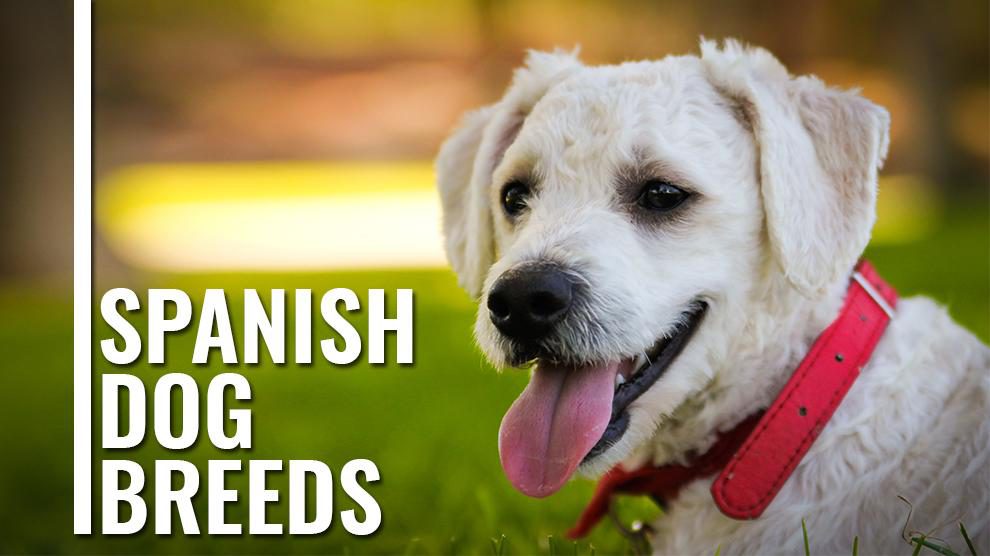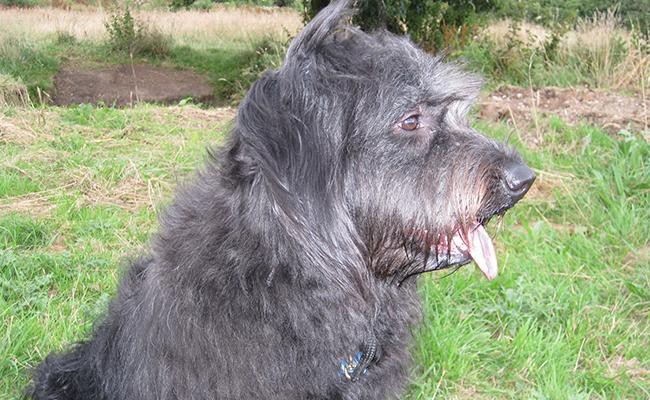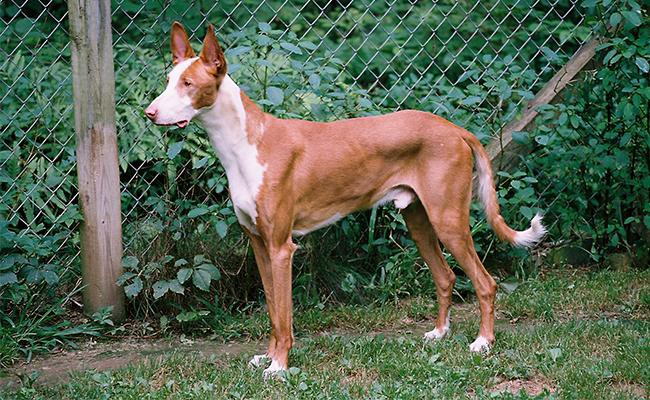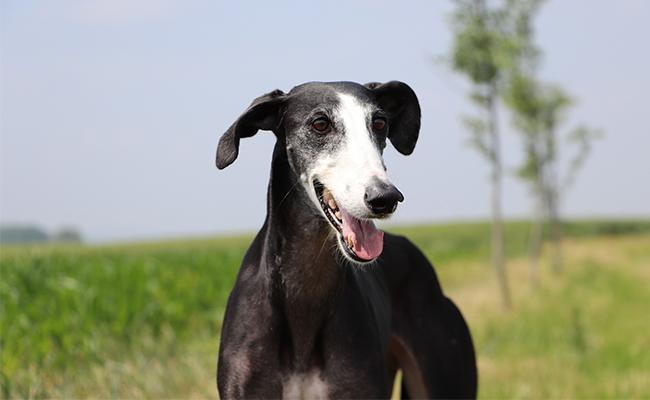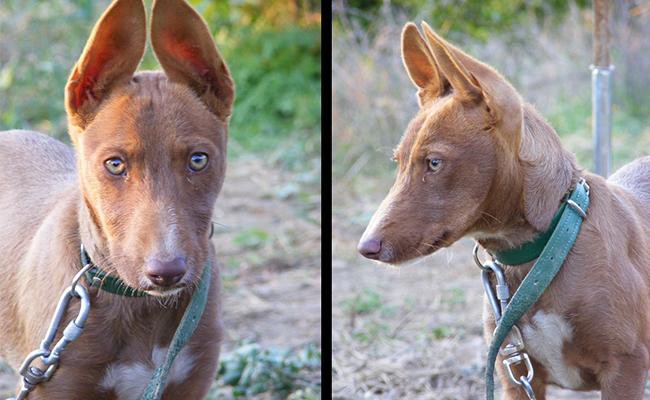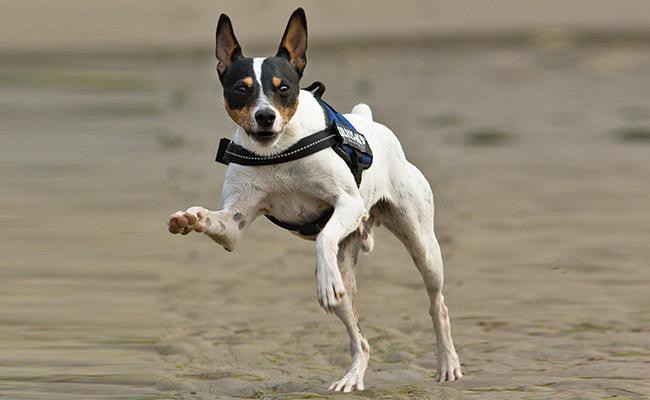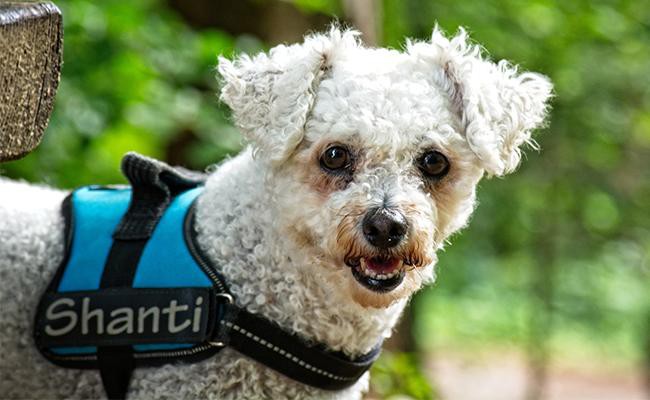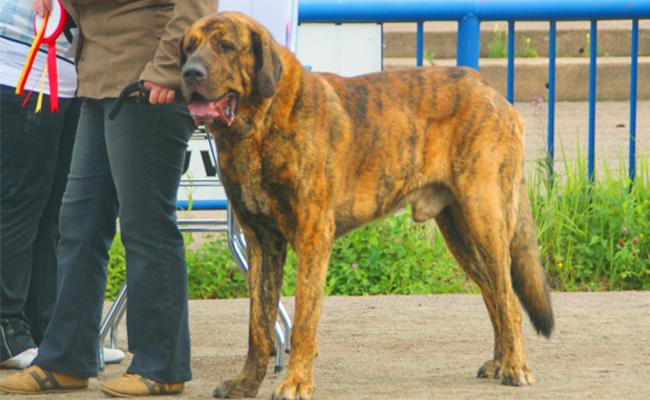Dog Pregnancy Calculator And Timeline
This Europe’s postcard-perfect country, Spain, has quite a few dog breeds unique to the region. Some Spanish dog breeds can trace their heritage for more than 5,000 years.
The Spanish Royal Canine Society (RSCE) states that there are officially 23 Spanish breeds. However, according to other canine federations, over 40 recognized dog breeds are native to Spain.
Spanish dog breeds functioned as companions, livestock guardians, and also pastoral dogs.
The Spanish deployment of war dogs made many opponents into a sad state of demoralization and psychological vulnerability.
Spanish war dogs included greyhounds, wolfhounds, pit bulls, lurches, and massive mastiffs similar to modern Rottweiler’s.
At the beginning of the 16th century, some were deployed against Aztecs by the Spanish army.
Fasted before the battle, they were in a state of ravenous, voracious hunger. Generally, people trained this dog to fight and kill with extreme viciousness.
In acts of genocide in many battles, they used these terrifying Spanish war dogs with dragging jowls and gaunt bellies.
On the other hand, Spain is also home to a wide variety of breeds that will bowl you over with their sweet faces, heart-melting twinkling eyes, silky coats, and overwhelming cuteness.
Catalan Sheepdog
- Height – Males 47 – 55 cm, Females 45 – 53 cm
- Weight – Males 20 – 25 kg, Females 17 – 21 kg
- Lifespan – 12-14 years
- Best Suited For – Active families, active singles, a house with a yard, family with children
- Highlights – Active, Intelligent, playful Smart, and extremely loyal
Also known as gosd’aturaCatalà, Perro de Pastor Catalan, or Catalan shepherd, this breed of dog is native to Catalonia, an autonomous community in the north-east region of Spain.
They are a breed of the Catalan Pyrenean dog, initially set up to herd animals in the Pyrenees Mountains, and these days they have captured the hearts of people all over the world.
They are the right choice for first-time owners because they are intelligent and are always easy to train.
From a distance, they all seem to look like one mess of uniform-colored fur. But, you might realize upon closer inspection that is a mess of several different cookie colored tones.
They tend to shed in two stages, which is a unique trait of this breed. Foremost, the anterior half of their body sheds and then the dorsal half. At the end of the first stage, you might think that your dog forgot to shed the remaining half of its fur!
Ibizan Hound
- Height – Males 56 – 74 cm, Females 56 – 74 cm
- Weight – Males 20 – 29 kg, Females 20 – 29 kg
- Lifespan – 12-14 years
- Best Suited For – Experienced dog owners, active families, a house with a yard, family with children
- Highlights – Affectionate, athletic, Gentle, Intelligent, and playful
(It’s not I-beez-an; it is I-beeth-an)
If you are an owner of an Ibizan hound, probably, you will have many beautiful stories to tell about your dog’s history.
This is because the Ibizan is considered an ancient dog used for hunting by the Pharaohs of Egypt in the past.
In the 8th century, the Phoenician sailors brought Ibizan to the Balearic Islands (Ibiza being one of them) so that it could be used to hunt for rabbits.
This ancient dog breed remained in the islands unspoiled for the next 2000 years. Because of its colorful history and exceptional elegance and athletic abilities, the Ibizan hound will naturally draw dog lovers’ attention.
He happily chases small animals at every opportunity and can flat-foot jump a six-foot fence. Generally, he may look exotic and proud.
However, the Ibizan hound also has an affectionate, childish side. If you’re going to live with him, it’s better to have a sense of humor.
Also known as the Ibizan Warren hound and beezer, the breed is now standard on the Spanish peninsula.
Galgo (Spanish Greyhound)
- Height – Males 60 – 70 cm, Females 60 – 70 cm
- Weight – Males 20 – 30 kg, Females 20 – 30 kg
- Lifespan – 12-15 years
- Best Suited For – Experienced dog owners, hunters, active families, a house with a yard, an excellent companion for runners and joggers
- Highlights – Courageous, Energetic, Sensitive, Athletic, Calm
The GalgoEspanol is also known as Spanish greyhound or Spanish Galgo.
This breed can hunt hares in the countryside. They resemble the greyhounds in appearance though they do not have any relevance with Irish or English greyhounds.
The origins of the Spanish greyhound date back to the sixth century BC. Furthermore, historians speculate that the Phoenician traders bought the early Galgos to Spain.
The theory is that during the middle ages, when the Moors conquered Spain, they bred this breed with the African sighthounds, creating an agile, ultra-sleek dog perfect for hunting.
Like many other breeds, eventually, Galgo has undergone significant change. Galgo has a grave and reserved temperament because of which the Spanish nobility cherishes this dog as a hunter.
The people who breed and own the Galgos dogs are called Galgueros. They have more concerns about the hunting and coursing season in Spain, which is only a few months long.
Earlier in Spain’s rural regions, they are considered more “disposable hunting tools” than pets. So a lot of dogs are just abandoned or eliminated in cruel ways.
As a result of international animal protection organizations’ reaction, Spain has adopted a new law against cruelty to animals.
Perro de Presa Canario
The Presa Canario or in English, Canarian catch dog, is a robust, Molosser type breed that originated in the Tenerife and Grand Canaria Islands, Spain.
The large intimidating, Dominant, and intelligent dog is also known as Doggo Canario, CanarianMolosser, and Canary Mastiff.
When properly socialized and trained, the Canary Mastiff is docile, dutiful, and devoted to his family—their large, imposing stature makes it well suited for guarding.
Bold and fearless, they are highly suspicious of strangers. Many people who’ve owned the dogs have often commented on how this dog is very protective of its families, always having a watchful eye on any threat coming in their family’s way.

- Height – Males 60 – 66 cm, Females 55 – 62 cm
- Weight – Males 50 – 65 kg, Females 40 – 55 kg
- Lifespan – 10-12 years
- Best Suited For – Experienced dog owners, active families, a house with a yard, and for guard duty
- Highlights – Confident, Courageous, devoted, headstrong, and watchful
Andalusian Hound (Podenco Andaluz In Spanish)
- Height
- Small: 32-42 cm
- Medium: 43-53 cm
- Large: 54-64 cm
- Weight
- Small: 5-11 kg
- Medium: 10-22 kg
- Large: 21-33 kg
- Lifespan – 10-12 years
- Best Suited For – Experienced dog owners, hunters, active families, a house with a yard
- Highlights – Affectionate, Energetic, playful, protective, and watchful
This sleek, prick-eared sighthound is similar to other Iberian breeds such as the Ibizan hound, the Portuguese Podengo, knock knees, the Maneto, and the PodencoCanario.
The breed comes in three different sizes –PodencoAndaluzTallaMediana, PodencoAndaluzTalla Grande, PodencoAndaluzTallaChica.
It also has three distinctly different coats – wire hair, longhair, and smooth (all of which lack an undercoat). The combination of these factors can lead to up to nine different varieties.
Like the other hounds, Andalusian hounds have a phenomenal sense of sight, hearing, and smell, making them good hunters.
The breed is affectionate and friendly towards its owner, submissive and easily trained, compared to other hunting breeds. If not properly socialized, its hunting instincts might be a problem for homes with cats and other small pets.
Ratonero Bodeguero Andaluz
- Height – Males 35 – 43 cm, Females 35 – 43 cm
- Weight – Males 6 – 9 kg, Females 6 – 9 kg
- Lifespan – 12-18 years
- Best Suited For – Experienced dog owners, a house with a yard, farmhouses, and for guard duty
- Highlights – Active, alert, tenacious, and watchful
The RatoneroBodegueroAndaluz, sometimes also referred to as the Spanish Jack Russell, as at a glance it might remind you of the Jack Russell Terrier.
It may be because of the constitution and hair that resembles Russell’s charming coat that may be smoother or broken. So, it’s not hard to see why they acquire the moniker of the Spanish Jack Russell.
RatoneroBodegueroAndaluz is a native Spanish breed that has grown in western Andalusia, especially in Cádiz. They were used to chase mice from wine cellars, horse stables, and warehouses.
This medium-sized Andalusian Rat Terrier was useful for hunting rabbits and hares as well. It is people-friendly Spanish dog breeds and is quite affectionate and even comical at home.
They have an exuberant and joyful personality but have a strong prey drive.
The breed is not recognized by the FCI or by any other international body. But, they are recognized as an official native Spanish dog breed by the Spanish Royal Canine Society.
Spanish Water Dog
Covered with cute curls and extremely affectionate with owners, the Spanish water dogs are excellent swimmers.
For experienced dog owners who are searching for an active breed, they are an adorable addition to their family.
They have other names such as Perro de Agua, Barbeta, Churro, PerroTurco, Perro de Lanas, PerroRizado, Laneto, Perro de Agua Espanol or PerroPatero.
People trained them to assist Spanish fishermen while they were out at sea.
The helpful dogs would fetch items that fell overboard and used to pull in nets. These are excellent guard dogs.
Regardless of being suspicious of strangers, they are highly affectionate with their owners and absolutely loyal.
They carry a thick woolly mantle. So, they are a good match for those with first-class grooming skills.

- Height – Males 44 – 50 cm, Females 40 – 46 cm
- Weight – Males 18 – 22 kg, Females 14 – 18 kg
- Lifespan – 10-14 years
- Best Suited For – Experienced dog owners, Families with children, houses with yards, farms/rural areas
- Highlights – Active, Intelligent, versatile, loyal, and watchful
Bichon Frise
- Height – Males 22 – 30 cm, Females 22 – 28 cm
- Weight – Males 3 – 5 kg, Females 3 – 5 kg
- Lifespan – 13-17 years
- Best Suited For – Families with children, apartment dwellers, houses with yards, farms /rural areas, and even RVs that are traveling cross-country!
- Highlights – Affectionate, spunky, spirited, silly, and playful
This cotton candy dog is a descendant of the Barbet (water spaniel) because of which people in the Mediterranean area from the middle ages celebrated this breed.
Historians speculate the breed originated in the Canary Islands and then came to the European mainland by sailors.
Bichons are good companion dogs, mainly because of their elegance and even temperaments.
This delightful happy-go-lucky dog is the friendliest of Spanish dog breeds.
Furthermore, they are incredibly social, great with families, and are excellent with children and other pets.
Spanish Pointer
- Height – Males 62 – 67 cm, Females 59 – 64 cm
- Weight – Males 55 – 66 kg, Females 55 – 66 kg
- Lifespan – 12-15 years
- Best Suited For – Families with children, houses with yards/farms, and houses in rural or semi-rural settings
- Highlights – Adaptable, calm, gentle, loyal, intelligent
The Spanish pointer has other names also – the Perdiguero de Burgo, Burgos pointer or Burgalese Pointer.
People developed this breed in Castilla y León, specifically the Castilian Plateau for hunting.
The Spanish Pointer is the granddaddy of all pointing dogs. The list includes the English Pointer, the German Pointer, Russian Pointer, and also the French Double-Nosed Griffon.
It is therefore inaccurately called “Old Spanish Pointer” in some publications.
The Burgos Pointer is a relatively modern descendant of the Old Spanish Pointer or Perdigeuro Navarro. But, they are actually two separate breeds.
Spanish pointer is a multi-tasking dog and they do several jobs well. It is a rare combination that you don’t normally see in one dog.
With socialization and training, it would be an obedient, well behaved, and intelligent dog with a lot of energy.
It does not like to be left alone for long periods of time. However, it tends to be quiet unless there is an infringement like a stranger or intruder approaches.
Spanish Mastiff
- Height – Males 77 – 88 cm, Females 72 – 88 cm
- Weight – Males 90 – 100 kg, Females 52 – 77 kg
- Lifespan – 10-12 years
- Best Suited For – Families with children, houses with yards/farms, active singles, and experienced dog owners
- Highlights – Affectionate, aloof, Devoted, Laidback, intelligent
With heavy jowls, droopy ears, and kind, inquisitive eyes, the Spanish Mastiff is a bit like a Saint Bernard.
They have other names – Mastínespañol de campo y trabajo, Mastínganadero, MastínLeonés and also MastínExtremeño.
Native to the rural Iberian Peninsula, this is a massive molosser breed. Rightly so, they bred this dog breed to protect livestock and walk about 30 km or more per day.
Unlike the English Mastiff, which can fight wars, and the French Mastiff, chiefly a herding dog, the Spanish Mastiff can defend property and livestock from dangerous predators.
Spanish Mastiff is not wrinkly as the French or English Mastiff, and they were highly popular in the Middle Ages as a protector to a shepherd’s or cowherd’s livelihood.
Despite its history as a guard dog, nowadays, they are just as likely to guard homes as they guarded livestock.
This noble giant is calm, dignified, intelligent, and also standoffish. He is always loyal to his family and also will be wary of strangers.

